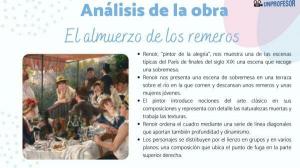Neoplatonism in Medieval Philosophy
In this video I will show you Neoplatonism in Medieval thought.
Medieval Neoplatonism, a Platonism based on two elements, the thought of Plato and Plutinus and on the other hand, Christianity.
The first author Neoplatonic Christian, it is Saint Augustine. For him, the ideal city (the one loved by Plato) is one based on a Christian doctrine.
What it does San Agustin it is to establish the main elements between faith and reason. For him, if at some point faith and reason do not agree, we have to pay attention to faith, not reason. This will result in philosophy being subject to theology for a long time.
We also have the thought of Juan Escoto Erígena, who establishes 4 types of natures: Not created, creative. (God) Created, creator. (the world of ideas) Created, not creative. (the sensible world) Not created, not creative. (God, as the final cause).
We finally have the thought of St. Anselm of Canterbury, who wants to prove the existence of god.
For San Anselmo the definition of God is that God is the most perfect being that can exist.
If you want to check that you have understood what was explained in today's lesson, you can do the printable exercises with their solutions that I have left you on the web.



